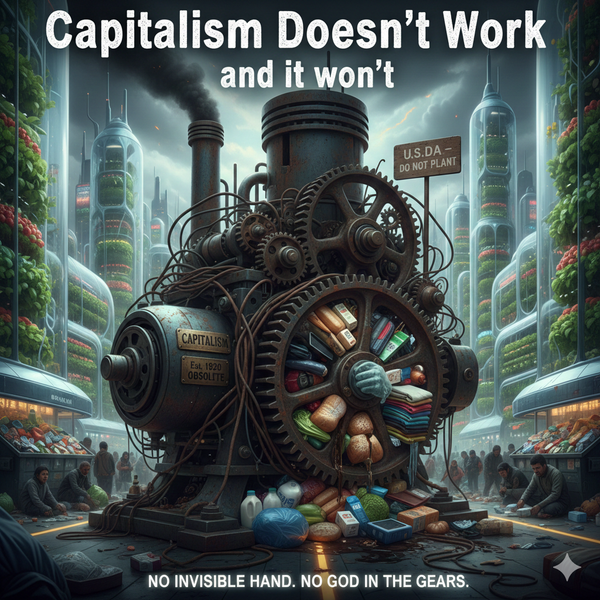U. S. Health Care

The Cruel Cost of American Healthcare — And the Horror of PrumpTutin’s Vision
We already know the numbers—and they’re obscene. In 2023, the United States spent $4.9 trillion on healthcare. That’s about $14,570 for every man, woman, and child, devouring 17.6% of our GDP. Nearly double what other wealthy nations spend per person—and still, twenty-six million Americans remain uninsured. It’s not just wasteful—it’s a national disgrace.
Other countries like Germany, Canada, and the UK manage to cover everyone for far less. Germany spends around 12.8% of GDP on healthcare. Canada about 11.6%. The UK, just 11.3%. France sits near 12.4%, and Australia spends around 10.6%. Across the OECD, the average floats between 9 and 12 percent of GDP—far below America’s 17.6%. And in those countries, people don’t live in fear of bankruptcy because they got sick. Meanwhile, here, we spend more and leave millions at risk of debt, untreated illness, or both.
We were gaining ground. The Affordable Care Act cut the uninsured rate nearly in half, expanded Medicaid, and protected people with pre-existing conditions. For the first time, millions of working people who’d been locked out of traditional Medicaid finally had a shot at affordable coverage.
Then PrumpTutin worked its will. The first term saw the individual mandate gutted, outreach budgets slashed, and junk insurance plans expanded. Premiums climbed, enrollment fell, and the pain hit hardest in states that refused to expand Medicaid.
Nearly all those states are solidly Republican—and that’s no accident. The cruelty in our healthcare system isn’t just a market failure; it’s a Republican plan. For years, GOP lawmakers have blocked Medicaid expansion, refused to rein in insurance profiteering, and fought any move toward universal coverage. In Texas alone, over 1.4 million people remain uninsured purely because state leaders won’t accept federal dollars to expand Medicaid.
And while politicians talk about freedom and choice, the medical profession has become transactional under the American Medical Association and the guidance of greed. Doctors no longer know their patients as people; instead, they oversee a clinical process reduced to charts, billing codes, and revenue streams. Everything revolves around billing codes—sometimes absurdly so. Take Mayo Clinic, for example. They performed an MRI and listed the location as “Office.” Because of that single word, insurance only covered $75. Meanwhile, Mayo charged $4,000—and refused to change the location code to “Hospital,” even though they perform heart surgeries there daily. One has to wonder how they squeezed an MRI machine into a doctor’s office. It’s the perfect snapshot of a system where the difference between affordable care and financial ruin comes down to paperwork, semantics, and who’s coding the bill.
If you don’t have insurance, hospitals charge you more—a lot more—than they’d accept from an insurance company. Insurers negotiate lower rates for every service, sometimes paying pennies on the dollar compared to the sticker price. Uninsured patients face the full retail rate, which can be five or ten times higher. My friend, Dr. Lenny, calls it a game. But for patients, it’s not a game. It’s terrifying. A $75 MRI under insurance might explode into several thousand dollars for someone paying cash. It’s a cruel penalty for not having coverage—and it pushes millions into debt or bankruptcy just for daring to get sick.
Our healthcare system has shifted from relationships to commerce, from trust to business, from healing to profit-seeking. In countries with universal care, doctors might earn less money and some move to the United States—but those systems ensure everyone gets treated, and costs stay under control. Meanwhile, much of the American medical establishment is determined not to go down that path. The American Medical Association has even lobbied to restrict the number of doctors entering the field, pressing for limits on medical school admissions and residency slots. By keeping the supply of doctors artificially low, those already practicing can maintain higher incomes.
In the micro, doctors pretend to care. In the macro, it’s all about money. One-on-one, they show compassion, talk softly, and nod with concern. But in their offices, they’re calculating how much they can bill, which codes bring the highest reimbursements, and how quickly they can churn through the next patient. Step back and look at the system as a whole, and it’s driven by revenue, billing schemes, and preserving the economic status of the profession. Patients become units in a business model rather than human beings in need of help.
Meanwhile, corporate healthcare thrives. America’s sky-high drug costs are no accident. Big Pharma collectively hauls in $160 to $200 billion in profits each year, with net margins often between 15 and 30 percent—roughly double the average of other industries. Giants like Pfizer, Merck, Johnson & Johnson, Roche, Novartis, Sanofi, and AstraZeneca each report billions annually. For example, in recent years, Pfizer earned about $2.1 billion in profit on $58 billion in revenue for 2023, even after COVID vaccine revenue dropped. Merck pulled in roughly $17 billion in 2024 profit, with margins exceeding 25 percent. Johnson & Johnson posted over $13 billion in net income in 2023, with margins that reached as high as 41 percent in some quarters. Roche reported a margin of around 22 percent, earning about $14 billion in 2023. Novartis maintained margins around 24 percent, with profits near $8.6 billion. Sanofi saw about $9.5 billion in profit at a 17 percent margin, while AstraZeneca earned roughly $6.8 billion in 2023 with margins around 14 percent.
It’s a business model built on patent monopolies and the highest drug prices in the world, while millions of Americans ration insulin or skip cancer treatments because they can’t afford them—and sometimes die painfully as a result. The profits keep rolling in—even as patients suffer.
And then came a moment that cut through all the polite fiction.
On December 4, 2024, Brian Robert Thompson, CEO of UnitedHealthcare, was shot and killed outside the New York Hilton Midtown hotel. He was on his way to an investor conference when a masked gunman ambushed him with a suppressed 9mm ghost gun. Shell casings were found engraved with the words “delay,” “deny,” and “depose.” It was a grim symbol of the public fury boiling over toward an industry that profits while patients go bankrupt.
I don’t condone violence—against anyone. Brian Thompson’s murder was horrific and unjustifiable. But it wasn’t random. It was the boiling point of the rage people feel toward a system that ruins lives for profit. Change must come through democratic action, not bullets. We can’t replace the fight for justice with chaos and tragedy. If corporate leaders have committed crimes or exploited the public, prosecute them—lock them up—but do it through the courts, not with guns.
Yet even murder didn’t slow the money machine. Hospitals keep merging into monopolies. Insurers rake in record surpluses. Big Pharma keeps prices sky-high. In May 2025, Andrew Witty stepped down as CEO of UnitedHealth Group, and Stephen Hemsley returned to stabilize the company. But the billions kept rolling in for corporate executives and shareholders alike.
PrumpTutin’s allies aren’t finished. Groups tied to Project 2025 are plotting to block-grant Medicaid, roll back protections for pre-existing conditions, and shrink federal healthcare to oblivion. The vision is simple—and brutal: if you lose your job or get sick, you’re on your own.
Yet we have the resources to fix this. Study after study shows that a universal system could save hundreds of billions by slashing waste, lowering drug costs, and simplifying administration. We already spend enough to cover everyone—and then some. What we’re missing isn’t money. It’s moral courage.
This isn’t theoretical. It’s whether a diabetic mother can afford insulin. Whether a family avoids losing their home when cancer strikes. Whether someone battling depression can get help before it’s too late.
We’re spending $4.9 trillion—twice what other nations spend—and still failing tens of millions. That’s not freedom. That’s failure. And under PrumpTutin’s vision, it will only get worse.
We have a choice: keep protecting corporate profits—or finally declare that healthcare is a human right in the richest country on Earth. The answer is clear. What’s obscene is that we keep refusing to act.
It’s not just human healthcare that’s been captured by this profit-driven model. After pet insurance was introduced, veterinary prices started rising rapidly, following the same path as human medicine. Clinics that once focused on affordable treatment for animals now rely on complex billing, expensive diagnostics, and procedures that mirror the high-cost world of human hospitals. The good news—for now—is that if you don’t have pet insurance, many vets will still lower the price. Unlike human healthcare, which simply punishes the uninsured, vets often try to help. But give it time—the vets may catch up.
Appendix: States Refusing Medicaid Expansion (as of 2025)
- Alabama (Red)
- Florida (Red-leaning)
- Georgia (Red-leaning)
- Kansas (Purple, leans Republican)
- Mississippi (Red)
- South Carolina (Red)
- Tennessee (Red)
- Texas (Red)
- Wisconsin (Purple, leans Democratic but blocked by a Republican legislature)
- Wyoming (Red)





